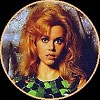The official line ups are:
Stephen Duffy, Simon Colley, Nick Rhodes, John Taylor (1978-1979)
Andy Wickett, Alan Curtis, Nick Rhodes, John Taylor, Roger Taylor (1979)
Jeff Thomas, Andy Wickett, Alan Curtis, Nick Rhodes, John Taylor, Roger Taylor (1979)
Simon Le Bon, Nick Rhodes, John Taylor, Roger Taylor, Andy Taylor (1980-1985)
Simon Le Bon, Nick Rhodes, John Taylor (1985-1990)
Simon Le Bon, Nick Rhodes, John Taylor, Warren Cuccurullo, Sterling Campbell (1990-1991)
Simon Le Bon, Nick Rhodes, John Taylor, Warren Cuccurullo (1991-1997)
Simon Le Bon, Nick Rhodes, Warren Cuccurullo (1997-2001)
Simon Le Bon, Nick Rhodes, John Taylor, Roger Taylor, Andy Taylor (2001-2006)
Simon Le Bon, Nick Rhodes, John Taylor, Roger Taylor (2006)
